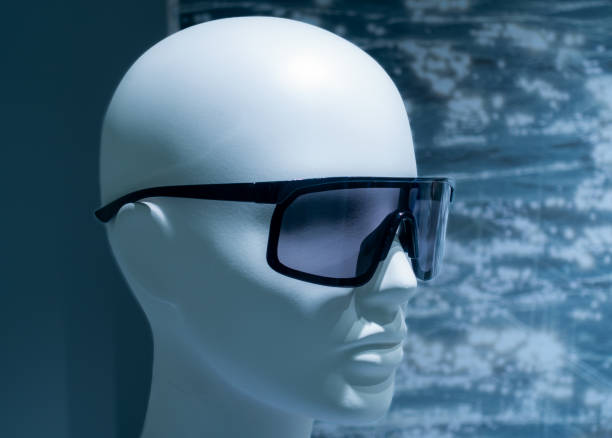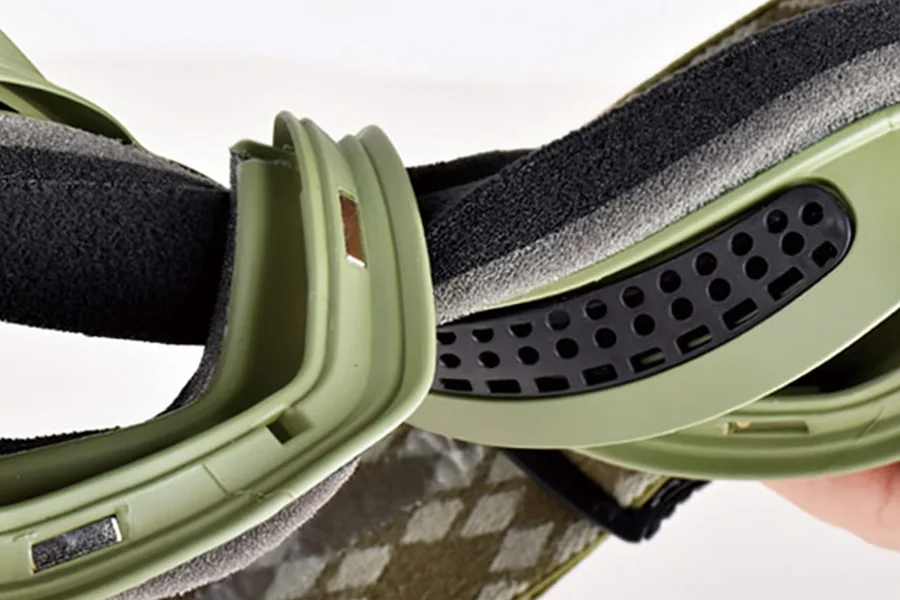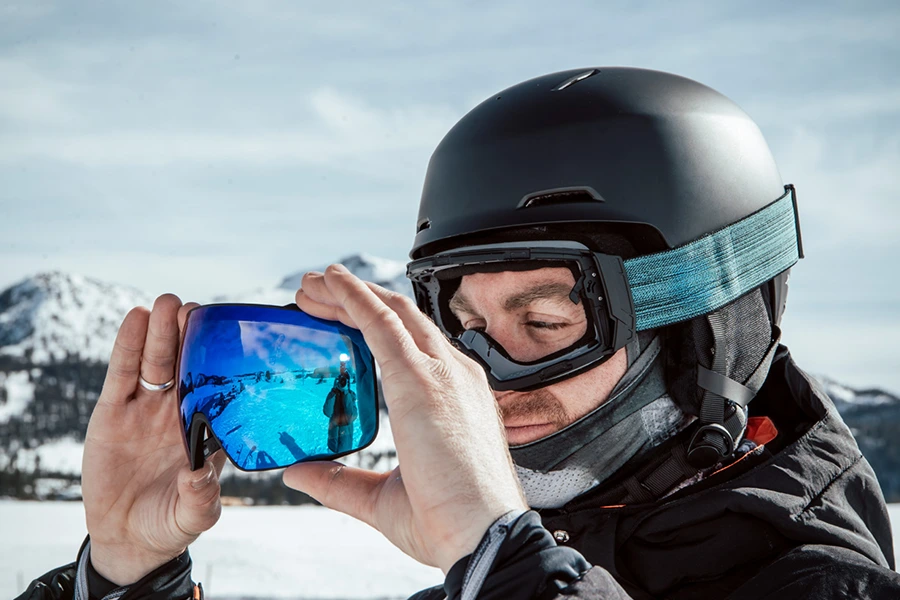Sunglasses are an essential tool for protecting your eyes from harmful ultraviolet (UV) rays, reducing glare, and improving visual clarity. But with so many options available, finding the perfect pair can be overwhelming. Should you go for polarized lenses? What frame material is best? How do you choose the right lens tint?
In this guide, we’ll walk you through everything you need to consider when buying sunglasses. By the end of this article, you’ll be well-equipped to make an informed decision and find the perfect pair of shades.
Sunglasses UV Protection

While there’s no denying that you look fantastic in those stylish shades, there’s a more important reason to wear them! Beyond being a fashionable accessory, sunglasses shield your eyes from harmful ultraviolet (UV) light, improving visibility in bright conditions while helping to prevent potential eye damage.
For those frequently exposed to high levels of UV light—whether during snowsports, watersports, or driving on sunny days—sunglasses are a must. When choosing a pair, ensuring they offer 100% UV protection is crucial. Despite the sun being 93 million miles away, its UV rays can contribute to serious eye conditions like cataracts, macular degeneration, and even eye-related cancers.
There Are Two Types of UV Light You Need to Look Out For:
UVB Rays
UVB radiation, a major contributor to sunburns, cancer, and eye damage, is particularly potent. While strongest during summer’s peak hours (10 am-4 pm) due to the Earth’s tilt, these harmful rays can still cause damage throughout the year, especially when reflected by snow.
UVA Rays
Unlike UVB rays, UVA radiation, which makes up the vast majority (95%) of UV light reaching Earth, maintains a consistent intensity throughout the year. Although weaker, it is significantly more prevalent, and has been shown to contribute to skin cancer, photoaging, and certain types of cataracts.
Sunglasses Frame Size

When choosing new sunglasses, the first thing to consider is face size. The frame size should generally match the proportions of your face—smaller frames suit smaller faces, while larger frames complement bigger faces. Keep in mind that frame size refers to how the sunglasses fit, not necessarily the amount of coverage they provide. Some oversized styles are designed specifically for smaller faces.
For a more precise fit, check the dimensions of the sunglasses, typically listed as three numbers: (Eye Size) – (Bridge Size) – (Temple Size). While not all manufacturers provide this information, we make an effort to include it in the specifications of every pair available on our site.
Eye Size
This refers to the horizontal width of a single lens, measured from its outer edge to the inner edge. Common sizes range from 40 para 62 mm.
Bridge Size
The bridge measurement indicates the distance between the two lenses. Standard widths typically fall between 14 e 24 mm.
Temple Size
Also known as the arm or earpiece length, the temple size represents the length of the piece extending from the frame to the ear. Typical measurements range from 120 para 150 mm.
Sunglasses Frame Material

Do you know how sunglasses are made? Selecting the right frame material is essential, as it significantly impacts the comfort, durabilidade, and functionality of your sunglasses. Different materials offer unique benefits, styles, and price points, each with its own strengths and drawbacks.
TR90 and TPU Frame Sunglasses
For the perfect balance between durability and comfort, opt for TR90 or TPU frames. These materials are lightweight, flexível, and impact-resistant, making them ideal for extended wear during any activity.
TR90 frames, a type of thermoplastic, are particularly known for their memory flexibility, meaning they retain their shape even after bending. TPU (Thermoplastic Polyurethane) offers similar benefits, providing a comfortable yet resilient frame that is perfect for both sports and casual wear.
Metal Frame Sunglasses
Metal is a popular choice for sunglass frames due to its flexibility, resistance to corrosion, and ease of adjustment, making it adaptable to various face shapes and styles. No entanto, metal frames are typically more expensive, less durable, and not ideal for high-impact activities or action sports.
Nylon Frame Sunglasses
For sports and performance activities, nylon frames are a top choice. They withstand temperature fluctuations, remain highly flexible, and provide the necessary rigidity for safety. Different brands use unique names for their nylon materials, such as Grilamid (a general industry term) and Oakley’s proprietary O-Matter™. Nylon frames are usually lighter, stronger, and more affordable than metal frames.
Titanium Frame Sunglasses
Commonly found in high-end sunglasses, titanium frames are exceptionally strong, scratch-resistant, and lightweight. While they offer superior durability, they also tend to be more expensive.
Polycarbonate Frame Sunglasses
This tough, impact-resistant plastic is widely used in sport and safety eyewear. Although highly durable, polycarbonate frames are typically rigid and lack flexibility. They are an excellent option for children, as they can withstand rough handling.
Acetate Frame Sunglasses
Acetate is a type of plastic, but it differs from standard plastics like acrylic or polyurethane. It is stronger, more flexible, and lighter than traditional plastic frames. Acetate frames also come in a wide range of colors and textures, with the color embedded within the material rather than painted on, making it more resistant to fading.
Plastic Frame Sunglasses
Sunglasses made from various plastics, such as acrylic or polyurethane, are generally the most budget-friendly option. While they may not be as durable as other materials, they provide an affordable choice for those prioritizing cost.
Sunglasses Lens Materials

PC, TAC, and Photochromic Lenses
For enhanced performance, consider premium lens options like PC (Policarbonato), TAC (Triacetate Cellulose), or photochromic lenses. These lenses ensure impact resistance, superior optical clarity, and adaptability to different light conditions, making them excellent choices for sports and outdoor activities. Photochromic lenses automatically adjust their tint based on light exposure, offering versatility in varying environments.
Optical Glass Sunglasses Lenses
Optical glass lenses are precisely ground and polished to ensure clear, distortion-free vision. They are highly durable and naturally resistant to scratches. The main benefits of optical glass lenses include exceptional visual clarity and superior scratch resistance. No entanto, they tend to be more expensive and can crack or shatter upon impact, making them less suitable for high-intensity activities or sports.
Polycarbonate Sunglasses Lenses
Polycarbonate lenses are ideal for individuals who lead an active lifestyle. Made from a material similar to aircraft windshields, these lenses are incredibly impact-resistant and virtually unbreakable.
They are lightweight, provide good optical clarity, and are 50 times more impact-resistant than optical glass. While they are scratch-resistant, they are not completely scratch-proof. Additionally, their optical clarity is slightly lower compared to optical glass or NXT lenses.
NXT Polyurethane Sunglasses Lenses
NXT Polyurethane lenses are the premium choice, offering the best of both optical glass and polycarbonate lenses. Made with Trivex, an advanced polymer material, these lenses provide outstanding impact resistance, exceptional optical clarity, and an ultralight feel. They are ideal for those who want top-tier performance and are willing to invest in high-quality lenses.
Acrylic Sunglasses Lenses
Acrylic lenses are a budget-friendly option, making them a great choice for casual or fashion sunglasses. While they don’t match the premium durability and optical performance of high-end lenses, they still offer decent clarity and resilience at an affordable price.
Sunglasses Lens Tints and Coatings

The color of your lenses isn’t just about style—it can affect how well you see in different lighting conditions.
- Gray – Reduces brightness without distorting colors; great for everyday wear.
- Brown/Amber – Enhances contrast and depth perception, making them ideal for driving and outdoor sports.
- Yellow/Gold – Boosts contrast in low-light conditions, commonly used in skiing or shooting sports.
- Green – Provides good color balance and contrast, reducing glare in bright conditions.
- Blue/Purple – Often chosen for fashion, but can also help reduce glare in snowy or sunny conditions.
In addition to tints, enhance functionality with specialized lens coatings and films:
- Anti-Reflective Coating – Minimizes glare and reflections, improving visual clarity, especially for night driving.
- Anti-Scratch Coating – Adds durability, preventing minor scratches and extending the life of your lenses.
- UV400 Coating – Blocks 100% of UVA and UVB rays, ensuring maximum eye protection.
- Hydrophobic Coating – Repels water, pó, and oil, keeping lenses clean and clear.
- Polarized Film – Reduces glare from reflective surfaces like water, roads, and snow, making outdoor activities more comfortable.
By combining the right lens tint with protective coatings, you can achieve optimal vision, durabilidade, and eye safety in various outdoor settings.
Sunglasses Lens Technology

Polarized Sunglasses Lenses
When light reflects off flat surfaces like water, snow, glass, sand, or pavement, it can create intense glare that may cause eye strain, fatigue, or even hinder vision (known as Brewster’s Angle).
Polarized lenses use horizontally-aligned polarizing microcrystals to block vertical light and reduce glare, making them ideal for activities like water sports, ciclismo, and driving where reflective glare is common. No entanto, they don’t provide additional UV protection.
Photochromic Sunglasses
Photochromic lenses automatically adjust their tint based on the surrounding light, offering protection in various conditions. They darken on bright days to block more light and lighten in low-light conditions.
No entanto, this process isn’t instant and may take longer in cold environments. Additionally, photochromic lenses don’t work inside a car, as the change in tint is triggered by UVB rays, which are blocked by the car’s windshield.
Gradient Sunglasses Lenses
Gradient lenses are darker at the top and lighter at the bottom, providing protection from overhead sunlight while allowing more light through the lower part of the lens, which is useful for clearly seeing your dashboard when driving.
Double Gradient Sunglasses Lenses
Double gradient lenses are tinted both from the top and the bottom, with the center remaining lighter. These lenses effectively protect against bright overhead sunlight and glare from surfaces like sand or water, making them ideal for water sports and outdoor activities where you need protection from light both above and below.
Quality
To assess the quality of the lenses, hold them at arm’s length and focus on a straight object in the distance, like a door or window frame. Slowly move the glasses side to side and up and down. If the straight edge appears to bend, warp, or shift, it indicates that the lenses are of inferior quality.
Polarization
Polarization and UV protection are not the same. Polarized lenses help reduce glare from reflective surfaces like water and snow, making them ideal for activities such as driving, boating, pesca, and winter sports. No entanto, they can interfere with the visibility of digital screens, making them unsuitable for tasks like piloting an airplane.
Determine the Best Sunglass Shape

With styles ranging from aviators to cat-eye to timeless rectangular frames, the choices are limitless. Selecting a sunglasses shape that flatters your face and enhances your confidence is key.
Know Your Face Shape
If you’re unsure about your face shape, don’t worry—we have some handy tips to help you determine it and pick the perfect frame style. The five main face shapes are square, heart, oval, round, and diamond.
There are several ways to identify yours: ask a friend or family member for their opinion, examine your reflection in a mirror, or use a dry-erase marker or a bit of soap to trace your face outline on the mirror. The shape that most closely matches your outline is likely your face shape.
Keep in mind that no two faces are exactly alike. While most people fit into these five general categories, some have more pear-shaped or triangular features. Com mais 130 genetic factors influencing face shape, finding the perfect frames may take some trial and error—but with a little patience, you’ll discover a pair that makes you feel confident!
For a Square-Shaped Face
If your face is square-shaped, look for glasses that help soften your strong, angular features. Rounded or oval frames work well to create balance. If you prefer a bolder style while still softening your look, aviator or cat-eye frames are great choices. Rimless frames can also enhance a softer appearance. Avoid square or rectangular frames, as they can emphasize sharp angles rather than balance them.
For a Heart-Shaped Face
Heart-shaped faces feature a combination of soft and angular elements, with a broad forehead and a pointed chin. Cat-eye and square frames work best to complement these features, creating a more balanced look. These shapes help even out the contrast between the wider forehead and the narrower chin.
For an Oval Face
With an oval face, your features are gently curved, and your face is slightly longer than it is wide. Since your features are naturally balanced, square or oversized frames work well to add structure. Frames that are wider around the eyes, such as cat-eye, aviator, rectangular, round, and square styles, will enhance your natural symmetry.
For a Round Face
If you have a round face, opt for frames that add angles and definition. Square, rectangular, or club-style frames create contrast and structure, complementing your soft, curved features. These shapes help to visually elongate and define your face.
For A Diamond-Shaped Face
Diamond-shaped faces have softer edges and high cheekbones. The best frames for this face shape are browline, round, or oval styles. These shapes add dimension and balance while enhancing your natural features with a gentle, rounded look.
Conclusão
Buying the perfect pair of sunglasses isn’t just about style—it’s about protecting your eyes and enhancing your vision. Prioritize UV protection, lens materials, and fit to ensure both comfort and functionality. Whether you need sunglasses for everyday wear, esportes, or fashion, understanding your options will help you make the best choice.
Now that you’re armed with this knowledge, don’t take our word for it. See for yourself! Explore our sports sunglasses collection here e custom your own unique sunglasses!
Perguntas frequentes
Why is UV protection important in sunglasses?
UV rays can cause serious eye damage, including cataracts and macular degeneration. Sunglasses with 100% Proteção UV (UV400) help block harmful UVA and UVB rays, keeping your eyes safe.
What is the difference between polarized and non-polarized lenses?
Polarized lenses reduce glare from reflective surfaces like water, roads, and snow, making them ideal for driving and outdoor activities. Non-polarized lenses do not have this feature but still provide UV protection.
How do I choose the right sunglasses for my face shape?
Round face: Go for angular frames like square or rectangular shapes.
Square face: Choose round or oval frames to soften your features.
Oval face: Almost any style works well.
Heart-shaped face: Try aviators or bottom-heavy frames for balance.
Diamond face: Cat-eye or oval frames complement high cheekbones.
What is the best lens material for durability?
Polycarbonate and Trivex lenses are lightweight, impact-resistant, and durable, making them ideal for active lifestyles. Glass lenses offer superior optical clarity but are heavier and more prone to shattering.
Do expensive sunglasses provide better protection?
Not necessarily. While premium brands may offer better materials and coatings, even affordable sunglasses with proper UV400 labeling can provide the same level of UV protection. Always check the specifications rather than just the price.





















